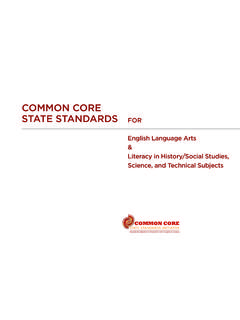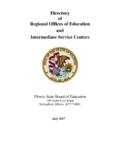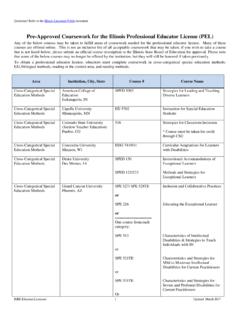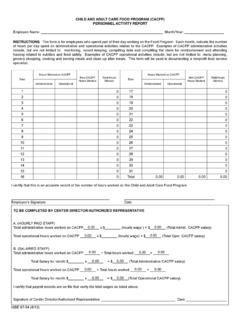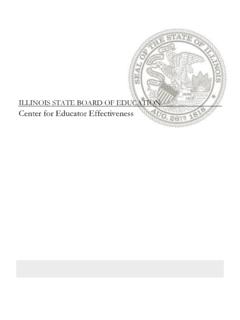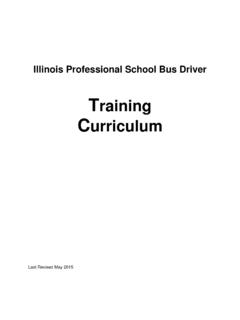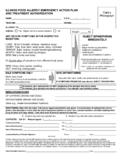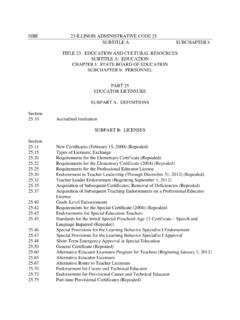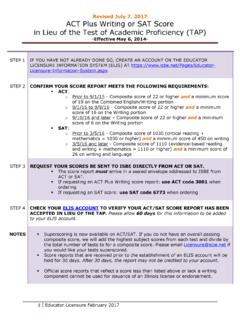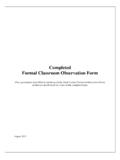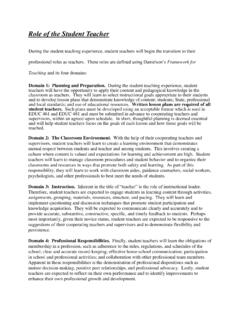Transcription of Taking - Illinois State Board of Education
1 Taking Do you ever walk from one place to another, seeing almost nothing? Not even sure how you got there? Then, at other It All times, you walk slowly, Taking in lots of sights and sounds. You notice some lovely red roses, the unusual patterns on a building, or how the light flickers through the trees. Maybe you hear birds chirping or an airplane flying overhead. When you walk this way, you are open and receptive, which leads to curiosity and wonder. In the classroom , where there's so much going on, it's easy to be on autopilot, moving from one child to another, one In place to the next, scanning the room just to be sure every- thing's okay.
2 But when you slow down just a little bit, you can see and hear so much more. Watching and listening to children with curiosity and wonder lets you learn more about them their interests, who they are, what puts a smile or frown on their faces, what they know and can do. Using observation in this way makes teaching more rewarding! observation observation is a powerful teaching resource When you teach with your eyes, ears, and mind open to what is happening around you, observation makes you a in the much better teacher. observation can t IFMQ ZPV HFU UP LOPX DIJMESFO TP UIBU ZPV DBO CVJME SFMB- tionships with them.
3 When children sense that you know them, they feel safe and secure and are more open to learn- classroom ing. t HJWF ZPV UIF JOGPSNBUJPO ZPV OFFE UP NBLF XJTF EFDJTJPOT . about what and how to teach each child. You can respond in just the right way if you take a moment to observe in the midst of an interaction. t FOIBODF ZPVS LOPXMFEHF PG DIJME EFWFMPQNFOU BOE MFBSOJOH . Judy Jablon t IFMQ ZPV HBUIFS FWJEFODF BCPVU DIJMESFO T QSPHSFTT UPXBSE . meeting curriculum goals. t QSPWJEF ZPV XJUI TQFDJmD FYBNQMFT PG XIBU DIJMESFO LOPX . and can do that you can share with their families.
4 Family members love to hear stories about their child's accomplish- ments. When a child's progress is slower or more advanced, it is important to have factual information to share that shows exactly what the child can do and what the child might be ready to learn. t BEE JOUFSFTU BOE FYDJUFNFOU UP ZPVS XPSL -FU ZPVS DVSJPTJUZ . about children guide you. 24 TEACHING YOUNG CHILDREN VOL 4 NO 2. The teacher can use what she learns in the following observation to plan new ways to support Claire's literacy development. A teacher sees Claire reading the book she's written to two other children in the library.
5 She observes how Claire holds the book, turns the pages, and makes up a story to go with the pictures. Make your observations more effective When you are intentional about observing, you can learn even more about children and be more effective as a respon- sive teacher. Here are some strategies to help you. Focus on what children actually do and say. As you ob- serve, notice details and avoid immediate interpretations. It's easy to form opinions with very little evidence, but often those judgments are inaccurate. When observing children, focus on the facts what you see and hear, not a quickly RICHARD GRAESSLE / NAEYC.
6 Formed impression. For example, this observation provides information about what Darius knows and can do and why: Darius has a unit block in each hand; he slowly places them on each end of a double unit block, increasing the height of his block tower. He sits back and looks. Then he asks Jorge, What do you think we should put on the building now? . Reflect on who you are as an observer. Our beliefs, at- titudes, assumptions, and expectations about people and What do you want to know about children? Your questions what you want to know about children guide your observations.
7 Each morning, al- low yourself a few minutes to wonder about children. Ask yourself, What do I want to learn about children today? observation provides you with answers. Your questions will change as you get to know children CFUUFS OPUJDF IPX UIFZ BSF DIBOHJOH PS XIFO TQFDJmD . issues come up for a child and family. What do you wonder about the children in your group? t 8IP EPFT )FOSZ MJLF UP QMBZ XJUI 8 BUDI IJN EVSJOH . choice time, and you may get an answer. t 8 IBU NBUFSJBMT XPVME IFMQ 4 IBOUFMMF MFBSO UP . recognize letter names? Watch where she plays and UIF NBUFSJBMT TIF DIPPTFT 6TF XIBU ZPV mOE PVU UP.
8 Include resources that will engage her and help her learn more about letters. t 8 IBU UPZT LFFQ )BLFFN FOHBHFE :PV DBO mOE DMVFT . by keeping track of how long he spends at each cen- MARILYN NOLT. ter during choice time and seeing how he plays. t 8 IBU NBLFT 3 PTFMMB MBVHI %JE SFBEJOH Don't Let the Pigeon Drive the Bus! put a smile on her face? 25. events shape what and how we see. Pay attention to your Observe over time and in different settings. It takes time to own experiences, beliefs, and influences. They may affect really get to know children. One observation gives you just a your observations.
9 For example, if you grew up with no broth- little bit of a picture. The more you observe, the more you can ers, you may not be as familiar with the rough-and-tumble learn. play that some boys display and may be more likely to inter- 'PS FYBNQMF ZPV LOPX UIBU 3 PYBOOF UFOET UP MJTUFO XIJMF . pret it as aggressive. When you don't understand something others share during read-alouds. But in dramatic play you a child is doing, keep an open mind. Ask the child's family TFF IFS ESFTTJOH VQ BT B mSFmHIUFS BOE UFMMJOH IFS UXP GSJFOET . member or a colleague to help you understand the behavior.
10 That the siren is ringing and they have to hurry to put out the mSF $IJMESFO CFIBWF EJGGFSFOUMZ JO EJGGFSFOU TJUVBUJPOT BOE BU . different times of the day. Observe in many ways. Take photographs of children as they work. Have conversations and jot down their words. Observe their drawings, paintings, block buildings, and other creations (collages, playdough, or clay structures). Talk with GBNJMZ NFNCFST UP mOE PVU NPSF BCPVU UIF DIJME . Document your observations. 3 FDPSEJOH XIBU ZPV PCTFSWF . provides evidence about what children know and can do. Your notes or other documentation can help you know how to respond to children and plan for instruction.
